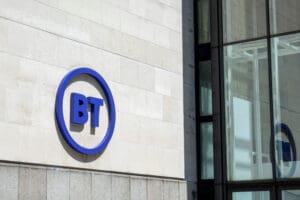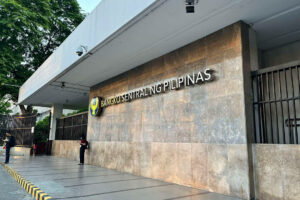DIGITAL BANKS’ nonperforming loan (NPL) ratio fell to a near two-year low in May as soured debts declined even as they disbursed more loans, latest data from the Bangko Sentral ng Pilipinas (BSP) showed.
The digital banking sector’s gross NPL ratio declined to 7.15% as of May from 9.5% at end-April and 20.64% a year prior. This was the lowest ratio seen since the 6.1% recorded in June 2023.
The BSP began consolidating data from digital banks starting March 2023.
The data showed that digital banks’ gross nonperforming loans were at P3.87 billion as of May, 21.66% lower than the P4.94 billion seen a year prior.
Loans are considered nonperforming once they remain unpaid for at least 90 days after the due date. These are deemed risk assets since borrowers are unlikely to pay.
Meanwhile, the sector’s total gross loan portfolio, exclusive of interbank loans receivable, was at P54.097 billion, more than doubling from the P23.92 billion in the comparable year-ago period.
BSP data also showed that digital banks’ past due ratio likewise dropped to 13.36% in May from 17.83% a month prior and 26.09% in 2024, with past due loans at P7.23 billion. Restructured loans accounted for just 0.01% of the industry’s total loan portfolio at P6.21 million, lower than the 0.02% in April.
Meanwhile, digital banks’ NPL coverage ratio was at 137.11% as of May, surging from 71.5% a year prior. Their allowance for credit losses rose to P5.3 billion from P3.53 billion, making up 9.81% of their total loan portfolio, down from the 14.76% loan loss reserves ratio seen at end-May 2024.
“The improving trend in digital banks’ NPL ratio may have to do with the expansion in their loan portfolio from very low levels in recent years, thereby leading to a higher base that quantitatively reduced the NPL ratio,” Rizal Commercial Banking Corp. Chief Economist Michael L. Ricafort said.
“Also, learning from past mistakes on lending that led to higher NPL ratio in the past through improved credit risk standards when loan portfolio amounts were much smaller,” Mr. Ricafort said. “That also helped reduce NPL ratio eventually with a much bigger loan portfolio of digital banks that are relatively new in the banking industry.”
BSP data showed that the highest NPL ratio posted by the digital banking sector thus far was the 25.33% recorded at end-March 2024.
Ronald B. Gustilo, national campaigner for Digital Pinoys group, likewise said that the decline in the sector’s NPL ratio may be a “strong indicator of improving portfolio quality and enhanced risk management practices.”
“Digital banks may have become stricter as more Filipinos are burdened with loans that may be very hard for them to pay. It could also indicate that borrowers are also wary of acquiring loans that could further bury them in debt,” he said.
“While it is still higher than the NPLs of traditional banks, the narrowing gap shows that digital banks are stabilizing, proving their viability as inclusive yet responsible financial service providers.”
The central bank in January lifted a three-year moratorium on digital banking licenses, allowing four more players to operate in the country to add to the current six.
The digital banking sector booked a net loss of P1.04 billion as of March, narrower than the P7 billion at end-December and the P2.07-billion loss in the same period a year ago.
Meanwhile, the industry’s assets stood at P133.5 billion as of May, up from P117.66 billion at end-December and P100.35 billion a year prior. — L.M.J.C. Jocson


















